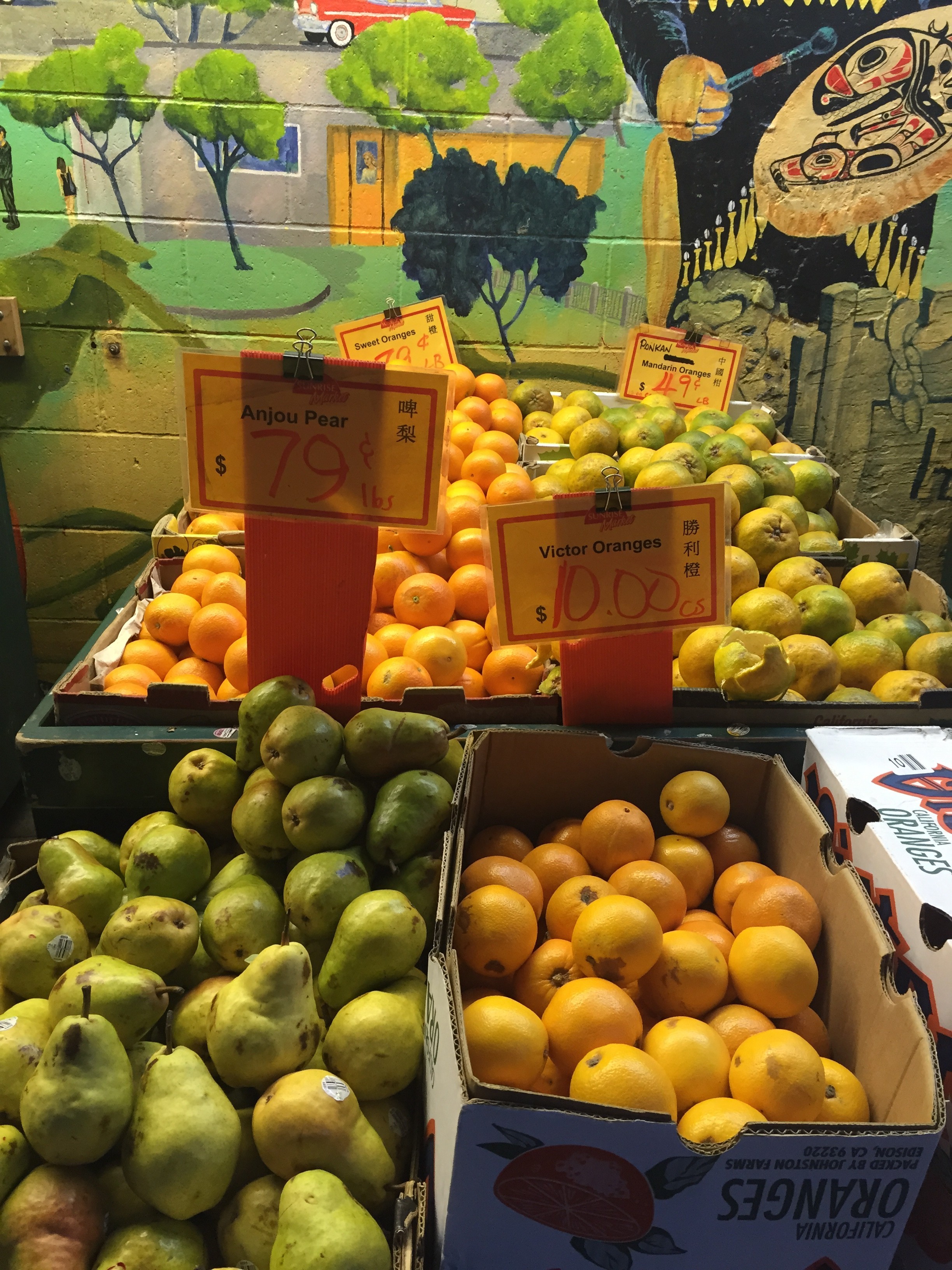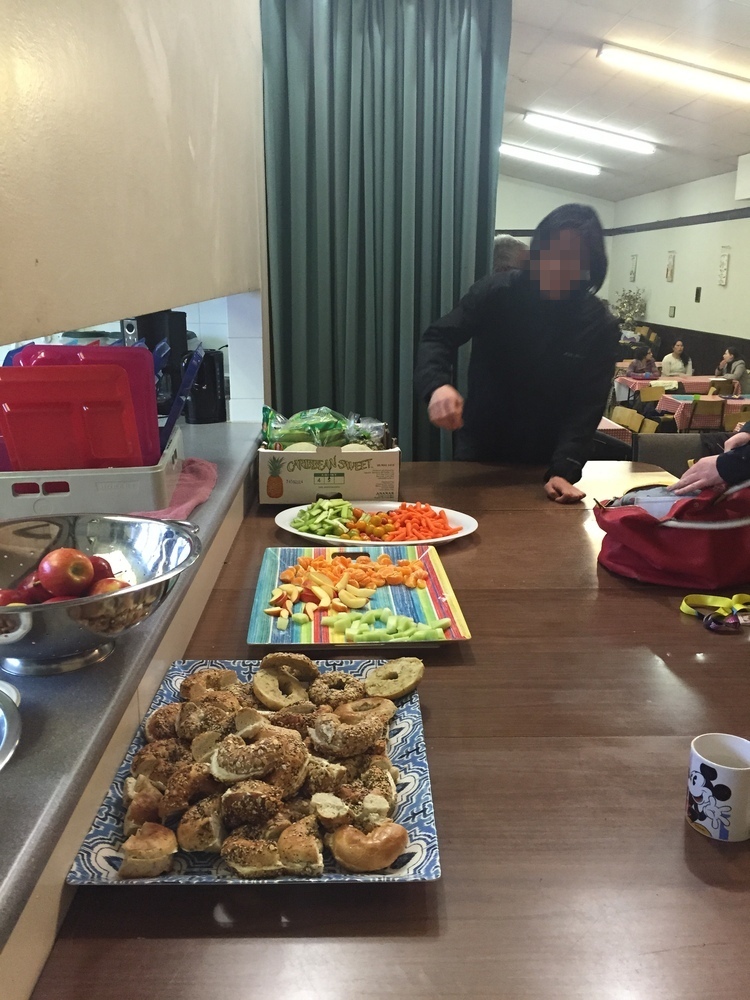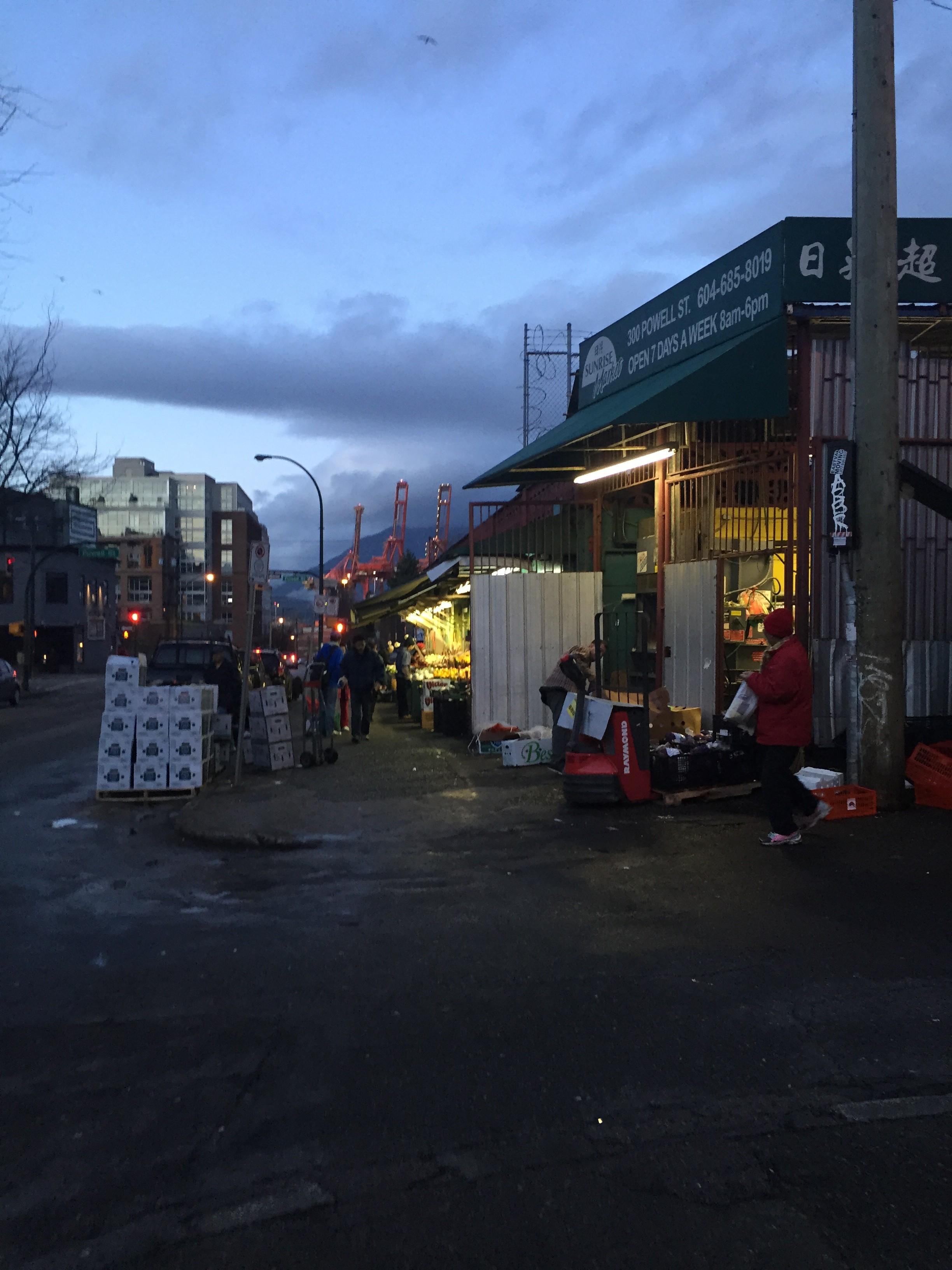BEGINNINGS
If there’s one map that’s good to keep around, it’s one that shows us where to get food! Preferably delicious, nutritious, low-cost food. Imagine a map connecting those vulnerable in our population with the resources of our community food system. This is what our team has set out to accomplish!
Group Introduction
As students in the faculty of Land and Food Systems, we are all especially aware of issues in the food system on both global and local scales. We are enthusiastic about this creative opportunity offered by the Vancouver Food Projects, and its focus on asset-based development which sustains positive change by empowering communities from the bottom up (Mathie and Cunningham, 2003).
Our Project and Our Goals

Photo courtesy of Behnaz
It is worthwhile to note that practicality played a role in our project selection. We regretfully rejected many ambitious ideas due to the time frame and resources available to us. However, having settled on a reasonable project, we can proceed with relative confidence in our ability to complete our objectives.
We chose to map food assets in the Downtown Eastside of Vancouver because we want to focus our efforts towards aiding some of our city’s most vulnerable people. However, in addition to our altruistic goal of helping those in need, we are also looking forward to becoming more familiar with the downtown area and building a greater connection to our city. Additionally, our group members hope this project will expose us to the reality of research in an unstructured environment. In other words, provide us practical knowledge of what to expect once we graduate and enter the workforce. We eagerly anticipate the new experience of gathering information from exploring the area and from online sources, and further, presenting this information in an accessible form for future research.
Group Experience
Our group has a diverse set of backgrounds and interests. However all of us have done food-related volunteer work with organizations catering to less-fortunate individuals. It seems great minds do think alike.
Cailey has volunteered at multiple soup kitchens which drove home her awareness of the difficulties of good nutrition and food security for those with a low income. She also observed the importance of soup kitchens as a place of community and socializing as well as a much-needed meal. A map of Vancouver’s food assets will not only make it easier for low-income individuals to connect with available resources, but also help build a community among those individuals.

Photo courtesy of Behnaz
Claire has also volunteered at a soup kitchen, albeit one geared specifically toward individuals with mental health issues. For her this emphasized the importance of a network of multiple assets to people unable to provide for themselves. A detailed map of food resources could expand the aid available to susceptible individuals by broadening their awareness about the surrounding community.
Evelyn volunteered at a food bank where she witnessed firsthand how limited the choices were for those of low income. By mapping the food assets of Vancouver previously unknown choices will be made available, and help Vancouver’s vulnerable citizens experience a greater level of self-determination.
Behnaz learned about the difficulties of maintaining a healthy diet for children from low income families when she volunteered in an East Vancouver music academy, and how donations were an essential part of the organization’s functioning. A holistic map of Vancouver’s food assets will help potential donors identify where their aid will be most valuable.
OBJECTIVES
Project Objective
- Assist the vulnerable population of the Vancouver Downtown Eastside by increasing awareness of food assets by presenting information in an accessible manner.
Steps to Achieve the Objectives
- Research other asset or resource maps currently available to avoid redundancy.
We want to ensure our project is an original idea.
- Define “assets” and “vulnerable persons”.
In order to define the boundaries of the project we need to specify the critical variables we will be focusing on.
- Research Vancouver areas where vulnerable people live and create physical boundaries based on this information.
One of our goals is an Action Area of the Vancouver Food Strategy; Empowering Residents. We will be looking at the area frequented by vulnerable people in Vancouver and search for meal opportunities within the vicinity. This will ideally provide a greater perspective on the variety of options available for people to eat.
- Research housing and food sites commonly used by vulnerable people to determine what is being accessed.
This objective fits into the Vancouver Food Strategy Priority Focus on food accessibility. They want to “address gaps in local food processing, storage and distribution” (Poole et al, 2013) and we are specifically looking at distribution and accessibility.
First Impressions
As a group, we were looking forward to taking on the challenge of completing a Vancouver Food Project! Initially we faced some apprehension about the assignment, as the possibilities seemed endless. We had many discussions and ideas filter through our group before we came up with one that was feasible, accessible to us as students and important to a portion of the Vancouver population. As we started to learn more about the assignment, we realized that we had the ability to tailor the project to our collective interests. As stated in the introduction, we share a passion for working with those who are underprivileged and we truly believe that being passionate about an idea will make all the difference and as such we were clear on the group we wanted to work with.

Photo courtesy by Behnaz
In his TED Talk, Want to help someone? Shut up and Listen!, Ernesto Sirolli emphasizes on the need for active listening as the first and most imperative step in identifying how to help a person. As part of our food asset project we want to exercise active listening with our community. We believe that the perspectives of our stakeholders; the organizations and people who influence and run community assets, are vital in designing our project. We want to avoid appearing as though our project is there to fix something that is wrong, but instead, collaboratively identify opportunities for improvement. We intend to build upon and strengthen people’s knowledge, accessibility and self-determination using the social capital they already have.
By building on community’s social capacity, we also aim to enhance community engagement and active citizenship encouraging the individuals to make their own food choices. As stated by Alison Mathie and Gord Cunningham (2003), “Asset-based Community Development has the potential to encourage active citizenship in the sense of citizen-to-citizen ties, while simultaneously strengthening the capacity of people as citizens to claim their rights of access to assets on which they depend for their livelihood” (p. 475). They also argue that developing a community using resources already present and thereby, will bring communities together.
Both of these ideas the main basis of our project. We intend to encourage community engagement and map out currently existing food assets, instead of looking at the need in the community, and in doing so, strengthen the sense of citizenship and empower individuals in their food choices.
References:
Poole, G., Mansfield B., & Kelly, T. (January 2013). What feeds us: Vancouver Food Strategy. Retrieved from http://vancouver.ca/files/cov/vancouver-food-strategy-final.PDF
Mathie, A., & Cunningham, G. (2003). From clients to citizens: Asset-based Community Development as a strategy for community-driven development. Retrieved from: http://www.jstor.org/stable/4029934?pq-origsite=summon&seq=1#page_scan_tab_contents